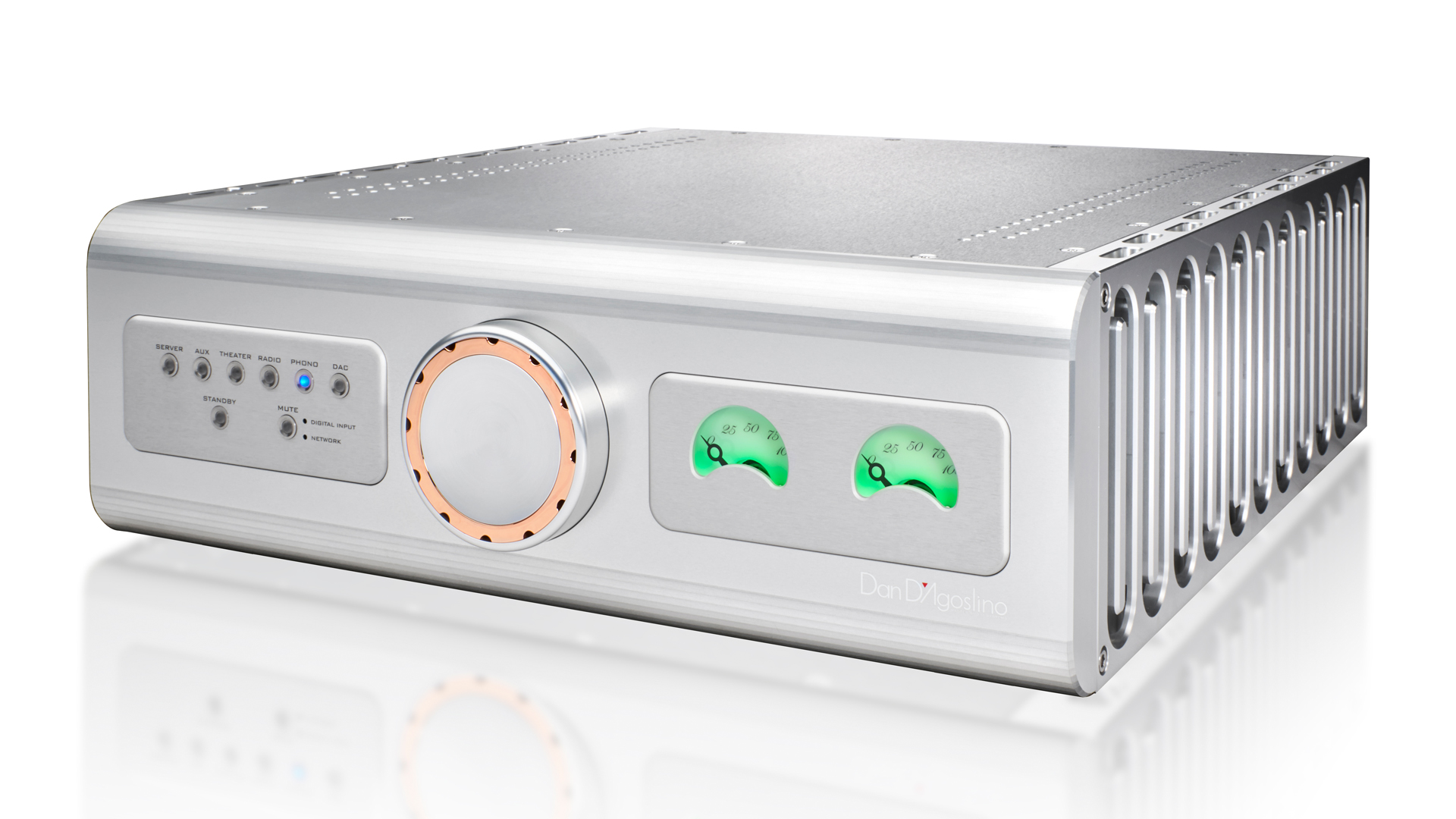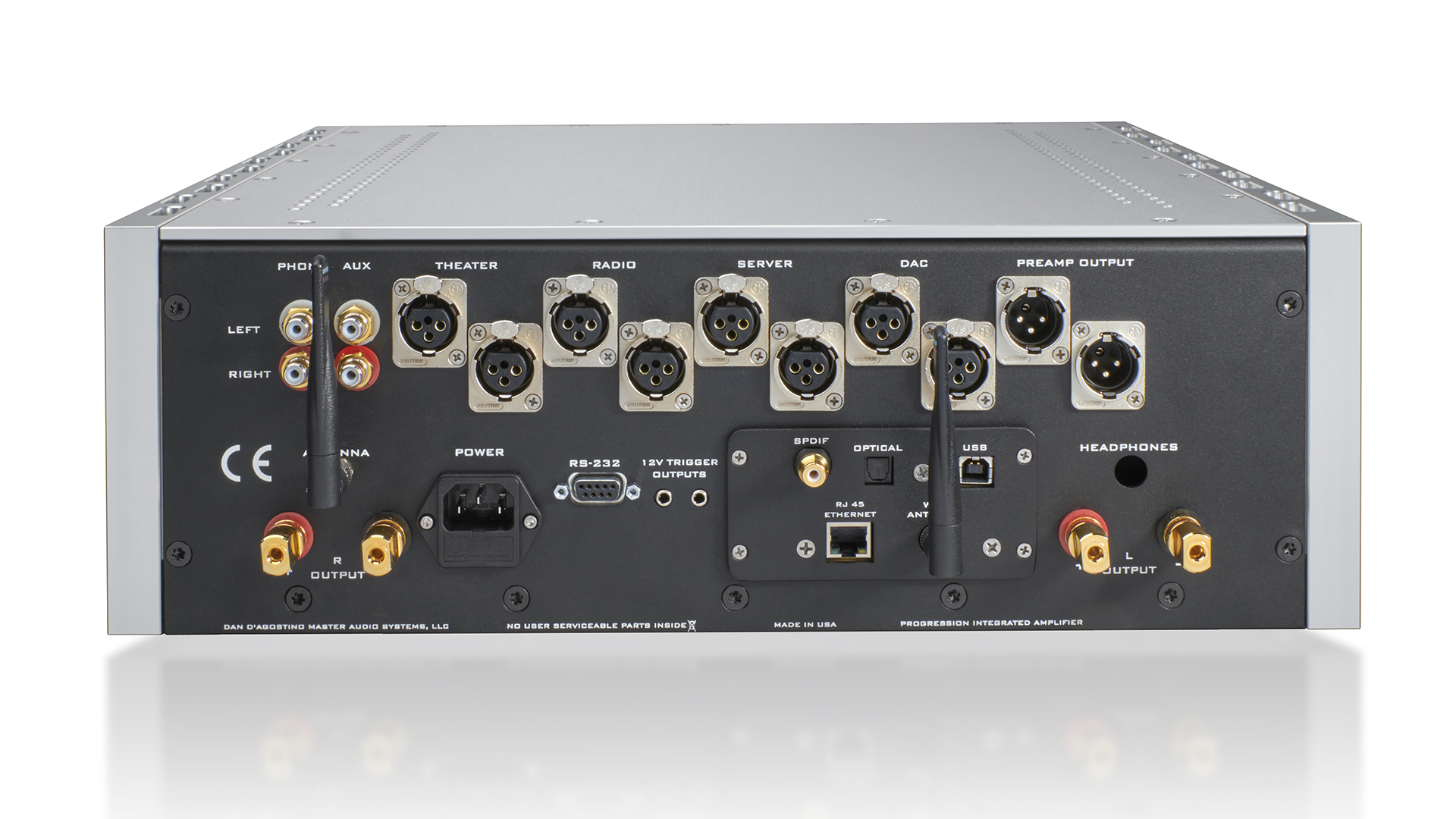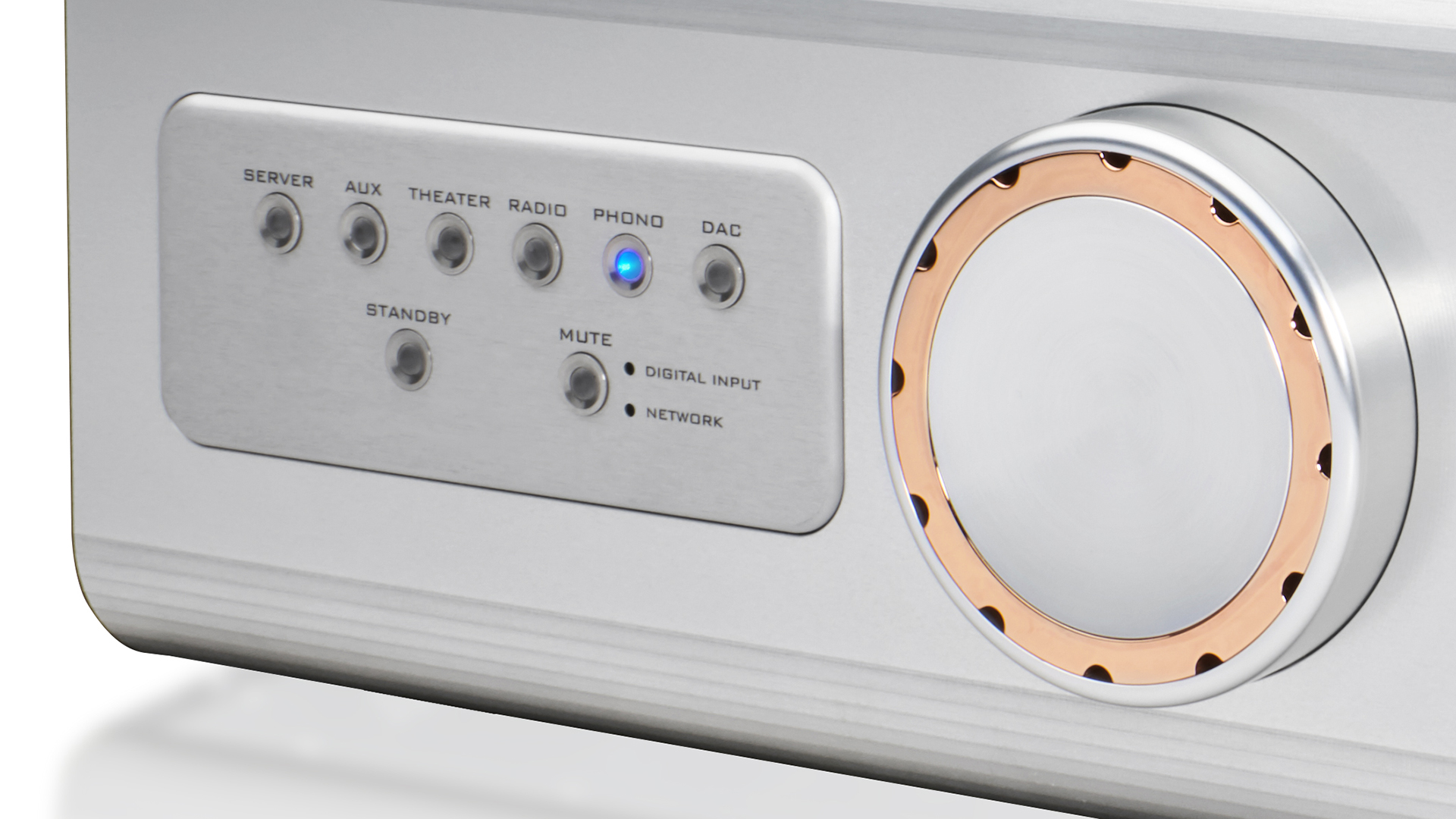What Hi-Fi? Verdict
The Progression is a hugely capable and versatile integrated. Rarely have we come across an amplifier that offers such sonic insight and control
Pros
- +
Staggering clarity and detail
- +
Superb build and finish
- +
Modular nature
Cons
- -
Headphone socket on the rear panel
Why you can trust What Hi-Fi?
Dan D’Agostino Master Audio Systems (to use the company's full name) only plays at the top table. Despite its hefty price tag, the Progression Integrated amplifier is the starting point for the brand's range, but that doesn’t make it a diluted facsimile of products further up the chain. It’s more like everything the brand knows in a condensed package.
At its most basic, this is a line-level analogue integrated amplifier costing £19,998 ($18,000, AU$34,995). But add the optional digital module for an extra £5600 ($5000, AU$8995) and you get a good range of digital inputs alongside network streaming capabilities.
Want to play records too? There’s a switchable moving magnet/moving coil phono stage module available for an extra £2250 ($2000, AU$3995) and it offers a decent range of cartridge loading options. In case you wondered, it is possible to fit both the digital and vinyl modules at the same time. As an aside, it’s unusual to see such a large difference in the USA and UK prices given the exchange rate.
Our review sample of the Progression has the digital module fitted, which has us wondering whether it should even be described as an amplifier – maybe streaming system would be more appropriate?
Features

The category lines between product types have blurred significantly in recent years and this is yet another example. No matter, though. As a just-add-speakers unit, the Progression Integrated is a truly mouth-watering proposition.

Power output 200W (8ohms)
Inputs 4x balanced XLR, 2x RCA, USB-A, optical, coaxial, Ethernet, wi-fi
Outputs Balanced XLR stereo
Dimensions (hwd) 18 x 43 x 43cm
Weight 26kg
It’s a powerhouse, no doubt. The combination of discrete, balanced, direct-coupled circuitry with a generous power supply results in a claimed power output of 200W per channel into an 8ohm load. That’s plenty, but the impressive thing is that the claimed power doubles as the load impedance halves. In practical terms, that means this unit is capable of driving any speaker to serious levels without issue.
Connectivity is good, with four balanced XLR inputs, plus two single-ended options (one of which would be used for the optional MM/MC phono module if chosen).
The latest hi-fi, home cinema and tech news, reviews, buying advice and deals, direct to your inbox.
The phono module’s gain of 60dB should be able to accommodate all but the lowest output moving coil cartridges on the market without issue. There are a variety of selectable cartridge loading options available to help fine-tune the performance with the cartridge of your choice.
The digital board fitted to our review sample is also well equipped. Buy this and you get digital inputs – a USB type-B, coaxial and optical – along with a network renderer and access to streaming services such as Tidal, Qobuz and Spotify. The digital module can connect to your network wirelessly, though we always recommend going the wired route for the extra stability it brings. Roon compatibility is also on the menu.
The module’s onboard DAC supports music files up to 24-bit/192kHz PCM and DSD256, which should be more than enough for most people. It also decodes MQA, so you can make the most of Tidal's hi-res Masters offering alongside other recordings so encoded.
Build

There’s no complaining about the D’Agostino’s build quality. This is an immaculately crafted beast. Every surface is beautifully finished and that large volume dial moves with impressive smoothness, exhibiting nothing in the way of obvious play. The two power meters look a little ornate but work well in their dual role of showing volume and signal level. They also help when we want to set the balance between the channels more accurately.
The dedicated Progression app to run the streaming module is decent, too. It looks like a reskinned version of the well-established mConnect media player software, and we have no issue with that. We’ve used mConnect for a number of years with various products and it has proved reliable. Some of the amplifier’s controls are only available here, so you can’t change digital input or select the internal streamer any other way than using the app.
This integrated runs warm in use, so it makes sense to take care over positioning. Make sure you leave plenty of room for ventilation around it and that your chosen support is comfortable with the amp's hefty 26kg weight.
Any amplifier at this level demands high-quality sources, of course. While the built-in digital module might be all the source that most people will need, we also plumb in our reference Naim ND555/555 PS DR music streamer to test the line level and digital inputs. Our usual Technics SL-1000R/Kiseki Purple Heart MC record player together with Nagra’s Classic Phono (phono stage) provides back-up as an alternative analogue source.
At the other end of the signal chain, we have our trusty ATC SCM50 speakers alongside Wilson Benesch’s Precision P2.0 floorstanders and ProAc’s new K1 standmounters. The Progression shows no particular preference and works well with all of them.
Even the 6.3mm headphone output proves unfussy, delivering great results with the likes of the Focal Stellia and Beyerdynamic T1 (3rd Generation) over-ears. However, it’s a shame the designer thought that putting the headphone output on the back panel was a good idea. It plainly isn’t.
Sound

Listen to this D’Agostino in full flow and you get a glorious experience. At this level, it’s fair to expect excellent detail resolution and superlative transparency, and we get both. We play Jupiter from Holst’s Planets Suite and are swept along with the energy and drama on offer.
This is an amplifier that excels at displaying the power and scale of an orchestra in full swing. Yet, despite all the sonic fireworks, it’s the Progression's framework of composure and control that is most striking. It never sounds stressed no matter how high the volume level goes or complex the music gets.
It’s a taut and precise presentation; one that edges towards the lean side of neutral without going as far as to be criticised for being thin or lacking in tonal colour. It’s this balance that allows the amplifier to sound so nimble for something so muscular.
Stereo imaging is terrific. The Progression paints a broad and expansive soundstage and populates it with crisply focused instruments. The orchestra is convincingly layered and there’s a pleasing impression of depth. This positional grip isn’t compromised when the music gets difficult either.
We switch to Massive Attack’s Heligoland and are floored by the D’Agostino’s low frequencies. They’re superbly defined, beautifully layered and punched out with rare agility. There’s plenty of muscle and authority of course, but that’s to be expected given the power output on offer. What surprises – and impresses – us the most, though, is the Progression’s articulate nature.
Things are surefooted rhythmically rather than truly enthusiastic, but there’s enough in the way of drive and musical momentum to keep us satisfied. Unlike many similarly priced, high-powered alternatives, the D’Agostino manages to sound musically cohesive and emotionally engaging.
The midrange is wide open and delivers Hope Sandoval’s vocals on Paradise Circus brilliantly. Her voice is rendered in an unusually clean and precise manner, though the Progression avoids sounding clinical by having enough in the way of natural warmth and dynamic nuance to convince. The highest frequencies certainly aren’t shy, but they remain nicely integrated and brim with information.
The D’Agostino’s sonic strengths shine through regardless of whether we use analogue or digital inputs. The onboard streaming module holds its own against similarly priced alternatives too, though such is the clarity of the analogue circuitry that a carefully chosen (invariably pricier) premium music streamer would deliver even better results, as listening to the Naim ND555/555 PS DR through it proves.
Our time with the D’Agostino had us trawling through our music collection, impatient to hear what all those familiar tracks sound like through it. It’s rare to find such a powerful amplifier sounding so transparent and responsive.
Verdict
There’s no doubt the D’Agostino Progression Integrated is a hugely capable product. It delivers a superb all-round performance and its modular nature means it offers far greater flexibility than most rivals. Regardless of whether you’re after a straight high-end integrated or something more fully featured, the Progression Integrated is something that must be heard.
SCORES
- Sound 5
- Features 5
- Build 5
MORE:
Read our guide to the best stereo amplifiers
Read our Chord DAVE/Ultima 5 review
Read our Nagra Classic Preamp/Classic Power review
Read our Mark Levinson No.585 review
What Hi-Fi?, founded in 1976, is the world's leading independent guide to buying and owning hi-fi and home entertainment products. Our comprehensive tests help you buy the very best for your money, with our advice sections giving you step-by-step information on how to get even more from your music and movies. Everything is tested by our dedicated team of in-house reviewers in our custom-built test rooms in London, Reading and Bath. Our coveted five-star rating and Awards are recognised all over the world as the ultimate seal of approval, so you can buy with absolute confidence.

